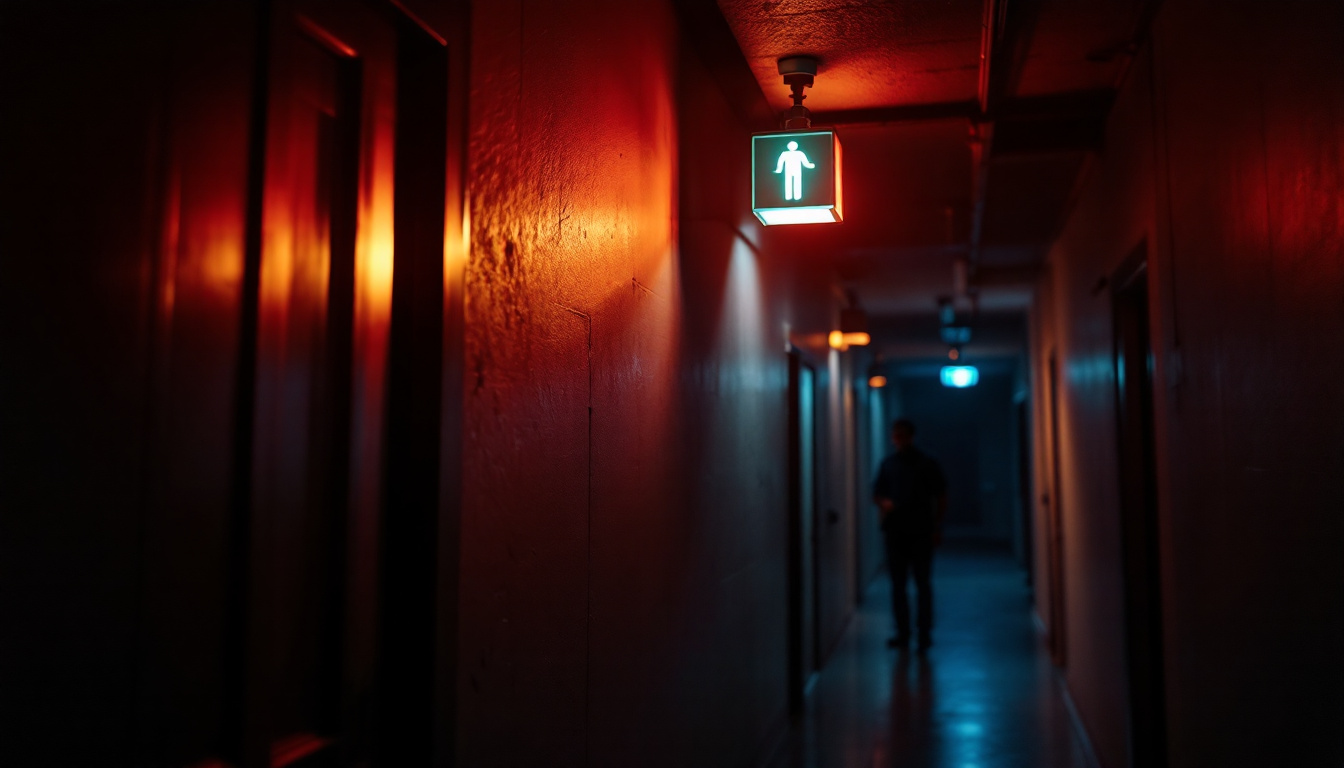

In the world of lighting installation, particularly when it comes to exit lights and emergency lighting systems, there are numerous factors that contractors must consider to ensure safety and compliance with regulations. However, even experienced lighting contractors can fall prey to common mistakes that can jeopardize the effectiveness of these critical systems. This article will explore some of the most frequent pitfalls that contractors encounter and provide insights on how to avoid them.
Exit lights and emergency lighting systems are essential for ensuring the safety of building occupants during emergencies. They provide illumination that guides individuals to safety, particularly in low-light conditions or during power outages. Understanding their importance is the first step toward effective installation and maintenance.
One of the primary reasons for installing exit and emergency lights is to comply with local and national safety codes. These regulations are designed to protect lives and property. Contractors must stay updated on the latest codes and standards to ensure that their installations meet all legal requirements.
Failing to adhere to these regulations can lead to severe consequences, including fines, liability issues, and, most importantly, endangering lives. Therefore, it is crucial for contractors to familiarize themselves with the specific codes applicable to their projects, including the National Fire Protection Association (NFPA) standards and local building codes.
Moreover, regular training and education on these codes can empower contractors and facility managers to make informed decisions about their emergency lighting systems. Keeping abreast of changes in legislation not only enhances compliance but also fosters a culture of safety within organizations. This ongoing commitment to safety can be reflected in the overall design and operation of a facility, ensuring that all aspects are geared toward protecting occupants in case of emergencies.
Another critical aspect of exit and emergency lighting is proper placement. Lights must be strategically positioned to ensure they are visible from various angles and distances. A common mistake is installing lights too high or in locations where they can be easily obstructed by furniture or other structures.
Contractors should conduct a thorough assessment of the space before installation, considering factors such as line of sight, potential obstructions, and the typical flow of foot traffic. This proactive approach can significantly enhance the effectiveness of the lighting system.
In addition to strategic placement, the type of lighting used can also impact visibility. For example, LED lights are often favored for their brightness and energy efficiency, making them ideal for emergency situations. Utilizing photoluminescent exit signs can also provide an additional layer of safety, as they glow in the dark and can be seen even when other lighting fails. By combining various lighting technologies and ensuring they are placed in optimal locations, contractors can create a comprehensive emergency lighting strategy that maximizes safety for all building occupants.
Even with a solid understanding of the importance of exit and emergency lighting, mistakes can still occur during the installation process. Here are some common pitfalls that contractors should be aware of:
One of the most critical aspects of installing emergency lighting is ensuring that there is an adequate power supply. Many contractors overlook the fact that emergency lights require a reliable power source, often assuming that existing electrical systems will suffice.
It is essential to evaluate the electrical capacity of the building and determine whether additional circuits or backup power sources are necessary. This evaluation can prevent future issues, such as lights failing to operate during a power outage, which can have dire consequences in emergency situations. Additionally, understanding the load requirements of the emergency lighting system can help in planning the installation effectively, ensuring that the lights are not only functional but also compliant with local safety regulations.
Emergency lighting systems often rely on battery backups to function during power failures. A common mistake is neglecting the maintenance and testing of these batteries. Over time, batteries can degrade, leading to diminished performance or complete failure when they are needed most.
Contractors should implement a regular maintenance schedule that includes testing the batteries and replacing them as needed. This proactive approach ensures that the emergency lighting system will function correctly when called upon. Furthermore, it is advisable to keep detailed records of battery performance and maintenance activities, as this documentation can be invaluable for troubleshooting and ensuring compliance with safety standards. Regular checks not only extend the lifespan of the batteries but also provide peace of mind that the emergency lighting will be operational in critical moments.
Another frequent oversight in emergency lighting installation is the improper placement of fixtures. Emergency lights must be strategically positioned to provide adequate illumination in escape routes and high-traffic areas. Contractors sometimes install lights without considering the layout of the building or the potential obstructions that could hinder visibility during an emergency.
To avoid this mistake, a thorough assessment of the building’s design should be conducted, taking into account factors such as ceiling height, potential obstacles, and the locations of exits. Utilizing a lighting design software can help visualize the placement and ensure that all areas are sufficiently illuminated. Additionally, consulting with safety professionals can provide insights into best practices for fixture placement, ensuring compliance with the National Fire Protection Association (NFPA) codes and local regulations.
The selection of appropriate exit and emergency lighting equipment is crucial for the success of any installation project. Choosing the wrong type of lights can lead to ineffective illumination and potential safety hazards.
There are various types of exit and emergency lights available on the market, each designed for specific applications. Some common types include LED lights, fluorescent lights, and incandescent lights. Each type has its advantages and disadvantages, and contractors must understand these differences to make informed decisions.
For example, LED lights are energy-efficient and have a longer lifespan compared to traditional incandescent lights. However, they may require specific drivers and circuitry that not all contractors are familiar with. Understanding the nuances of each type can help contractors select the most suitable equipment for their projects.
Another common mistake is ignoring the manufacturer’s specifications and guidelines for installation. Each product comes with specific requirements regarding mounting height, spacing, and electrical connections. Failing to adhere to these guidelines can result in subpar performance and potential safety hazards.
Contractors should take the time to read and understand the specifications for each product they install. This attention to detail can make a significant difference in the overall effectiveness of the lighting system.
Once the exit and emergency lighting systems are installed, the work is not done. Regular testing and maintenance are essential to ensure that the systems remain functional and compliant with safety regulations.
Contractors should establish a routine testing schedule for all exit and emergency lights. This includes monthly functional tests and annual comprehensive tests. During functional tests, lights should be activated to ensure they illuminate properly. Annual tests should include a longer duration to simulate real-life conditions.
Documenting these tests is also crucial. Keeping a record of testing dates, results, and any maintenance performed can help contractors stay organized and ensure compliance with regulations.
When issues arise, such as flickering lights or failure to illuminate, it is essential to address them promptly. Delaying repairs can lead to larger problems down the line and may compromise the safety of building occupants. Contractors should have a clear protocol for identifying and resolving issues as they occur.
One of the most effective ways to avoid common mistakes in exit and emergency lighting installations is through proper training and education. Keeping up with industry trends, technologies, and best practices can significantly enhance a contractor’s skills and knowledge.
Contractors should seek out continuous learning opportunities, such as workshops, seminars, and online courses. Many organizations offer training programs specifically focused on exit and emergency lighting systems. These programs can provide valuable insights into the latest technologies and regulatory changes.
Additionally, networking with other professionals in the industry can lead to the sharing of best practices and lessons learned. Engaging with peers can foster a culture of continuous improvement and innovation.
Obtaining certifications related to lighting installation can also enhance a contractor’s credibility and expertise. Many organizations offer certification programs that cover various aspects of lighting design and installation, including emergency lighting systems.
These certifications not only demonstrate a commitment to professionalism but also provide contractors with the knowledge needed to avoid common pitfalls in their work.
Exit lights and emergency lighting systems are critical components of building safety. Lighting contractors play a vital role in ensuring these systems are installed correctly and maintained effectively. By understanding the common mistakes outlined in this article, contractors can enhance their practices and provide safer environments for building occupants.
From regulatory compliance to proper equipment selection and ongoing maintenance, each aspect of exit and emergency lighting installation requires careful consideration. By prioritizing education, training, and adherence to best practices, contractors can avoid common pitfalls and excel in their field.
Ultimately, the goal is to ensure that exit and emergency lighting systems function as intended, providing reliable illumination and guidance during emergencies. By avoiding these common mistakes, lighting contractors can contribute to a safer future for all.
Ready to elevate your lighting installations with the highest quality exit and emergency lights? Look no further than LumenWholesale. Our spec-grade lighting products are designed to meet the most stringent industry standards, ensuring your projects are not only compliant but also equipped with reliable, high-performance lighting. With unbeatable wholesale prices and the convenience of free shipping on bulk orders, LumenWholesale is your go-to source for superior lighting solutions. Don’t let common mistakes compromise your installations. Choose LumenWholesale for the best value in lighting supplies. Wholesale Lighting at the Best Value.

Discover the transformative impact of warehouse pendant lamps in lighting installations.

Discover the essential insights lighting contractors need to know about sconce lights.

Discover why LED stadium lights are revolutionizing lighting projects with their energy efficiency, durability, and superior illumination.

Discover the essential insights lighting contractors need to know about LED strips.
Get notified when NEW deals are released.
Optimize your budget with wholesale discounts.
Only top-quality, specification-grade lighting products.
No additional costs at checkout - what you see is what you pay.
We understand the unique needs of contractors.